I am Iris Lau Shin Yee, a medical student from cohort ME123 at IMU University. From 12 to 15 August 2024, I had the privilege of representing the Society of Malaysian Medical Association Medical Students (SMMAMS) at the Sub-Regional Training (SRT) held at Taipei Medical University, Taiwan. Supported by the International Federation of Medical Students’ Associations (IFMSA), SRT is an international meeting where motivated students from various regions come together for trainings, workshops, and small working groups.
On the final day of the training, known as Graduation Day, participants are required to lead a session. This session is evaluated by trainers and IFMSA. Successful participants are then invited to join the IFMSA’s pool of trainers for future events.
I participated in the Training Public Health Trainers (TPHT) workshop, which was an eye-opening and enriching experience. Alongside intensive workshop sessions, we enjoyed social programmes such as a night market tour, a drink party, and a Bitan fireworks show.
Day 1
As with all IFMSA events, we began with ice-breaking activities and established ground rules for a productive session. These included “Speak up,” “Be punctual,” “No eating, only drinking,” “Respect others by not interrupting,” “Use only English,” and the unique “Perform a rain dance upon entering.” These rules fostered an inclusive and respectful environment.
The first few sessions delved into the intricacies of public health, starting with a creative exercise to envision our ideal public health trainer. We then focused on practical skills, such as effective communication and tailoring our approach to different audiences.
An activity on introducing the topic of malaria in three different communication styles—informal, non-formal, and formal was done to help us learn through trial and error. A session on adult learning theory highlighted the unique characteristics of adult learners and the importance of adapting teaching methods accordingly.
To assess our learning, we reflected on our initial thoughts and how they evolved throughout the workshop.
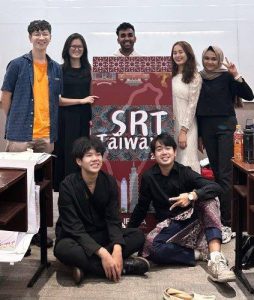
Day 2
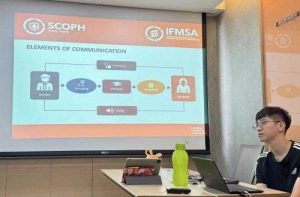
In the morning, we delved into the fundamentals of communication, focusing on the stages: sender, encoding, message, channel, receiver, and decoding. In one activity, one of us was shown a few question words and had to quickly imply the keyword within a brief description. The rest of us then guessed the keyword based on the context provided.
Following the activity, the trainer asked, “What do you observe?” and emphasized the critical role of communication, drawing a parallel to how doctors should treat patients, not just cure diseases. The trainer encouraged us to “Communicate confidently” and posed a scenario: “If you were asked to speak to a patient or colleague in the next two minutes, would you be ready?” This exercise highlighted the importance of regular practice and preparation in effective communication.
In the following session, we were taught that effective communication skills encompass active listening, respect, storytelling, and time management. To illustrate these skills in action, the trainer conducted an activity called “Pitch These Products to the Class!” We were able to apply what we learned, enhancing our ability to communicate effectively. We also learned about different types of feedback, including positive, negative, corrective, and motivating feedback. The trainer highlighted the importance of positive and negative feed forward and introduced the concept of sandwich feedback.
As usual, we paired up to practice giving feedback, then repeated the exercise after learning the principles of effective feedback to observe the differences in our interactions. Activities are always included in sessions as it is said that we will remember only 10% of what we read, 20% of what we hear but 90% of what we do. Thus, this activity reinforced the significance of implementing feedback effectively in communication.
Not to mention, we also explored various barriers to effective communication, including physical barriers, attitudes, emotional barriers, gender differences in communication styles, and psychological barriers. To overcome these barriers, we discussed strategies such as practicing active listening, demonstrating cultural sensitivity, ensuring clarity and simplicity in messages, avoiding assumptions, providing constructive feedback, and using summarization techniques.
What’s more, we learned about setting SMART goals—Specific, Measurable, Attainable, Relevant, and Time-based. To apply these principles, we engaged in an activity focused on introducing malaria to others. We were tasked with crafting a specific and clear introduction that effectively communicates key aspects of malaria. The goal was to ensure that the introduction is measurable (in terms of clarity and understanding), attainable (within our knowledge and resources), relevant (to the audience), and time-based (delivered within a set timeframe). This exercise helped us practice applying the SMART framework to real-world communication challenges.
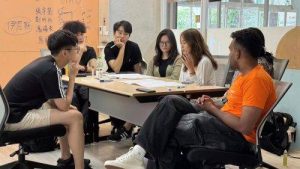
In the afternoon sessions, we engaged with open questions to deepen our understanding of public health. I find the questions quite intriguing as they encouraged us to reflect on the broader impact of public health, the role of healthcare professionals in it, and the benefits of applying public health principles across various levels of healthcare. The discussion aimed to enhance our awareness and integration of public health in our professional practice.
Besides, we discussed about key social determinants of public health and how these factors impact health access as well as the importance of addressing them to ensure equitable public health outcomes.
Furthermore, we explored the concept of One Health, which was relatively new to me. The trainer emphasized that human, animal, and environmental health are interconnected. He highlighted the significance of zoonotic diseases—illnesses that can be transmitted between animals and humans. By adopting a One Health approach, we can better address public health challenges and prevent these diseases, promoting overall well-being in our communities.
We were also taught the four levels of disease prevention—primordial, primary, secondary, and tertiary. These levels are essential for enhancing public health, ranging from promoting healthy lifestyles to managing existing illnesses. During the activity, the trainer listed vaccines, drugs, and some items linked to these prevention levels. We assessed each item and chose where to stand among sticky notes representing the prevention levels, which I find very engaging. Ultimately, primordial prevention is the most effective approach, as it emphasizes education and lifestyle changes to prevent diseases before they emerge.
The Sustainable Development Goals (SDGs) and Universal Health Coverage (UHC) were also brought up. Through activities, we tackled scenarios to achieve UHC.
At the end of the day, we practiced advocacy on different topics via a dynamic campaign activity. Following this activity, we covered Advocacy Roles and the Advocacy Cycle, further equipping us with the essential knowledge for effective public health advocacy.
In the afternoon sessions, we engaged with open questions to deepen our understanding of public health. I find the questions quite intriguing as they encouraged us to reflect on the broader impact of public health, the role of healthcare professionals in it, and the benefits of applying public health principles across various levels of healthcare. The discussion aimed to enhance our awareness and integration of public health in our professional practice.
Besides, we discussed about key social determinants of public health and how these factors impact health access as well as the importance of addressing them to ensure equitable public health outcomes.

Furthermore, we explored the concept of One Health, which was relatively new to me. The trainer emphasized that human, animal, and environmental health are interconnected. He highlighted the significance of zoonotic diseases—illnesses that can be transmitted between animals and humans. By adopting a One Health approach, we can better address public health challenges and prevent these diseases, promoting overall well-being in our communities.
We were also taught the four levels of disease prevention—primordial, primary, secondary, and tertiary. These levels are essential for enhancing public health, ranging from promoting healthy lifestyles to managing existing illnesses. During the activity, the trainer listed vaccines, drugs, and some items linked to these prevention levels. We assessed each item and chose where to stand among sticky notes representing the prevention levels, which I find very engaging. Ultimately, primordial prevention is the most effective approach, as it emphasizes education and lifestyle changes to prevent diseases before they emerge.
The Sustainable Development Goals (SDGs) and Universal Health Coverage (UHC) were also brought up. Through activities, we tackled scenarios to achieve UHC.
At the end of the day, we practiced advocacy on different topics via a dynamic campaign activity. Following this activity, we covered Advocacy Roles and the Advocacy Cycle, further equipping us with the essential knowledge for effective public health advocacy.
Day 3
Today’s training session was packed with essential tools and techniques for effective planning and analysis. We delved into the Problem Tree and Objective Tree through a hands-on activity focused on “Obesity Among Students,” helping us understand the key distinctions between vision, goal, and objective. We also explored outcomes and indicators, emphasizing their importance in measuring progress, and discussed the critical role of stakeholder engagement in project success. Timeline management techniques, including the use of a Gantt Chart for scheduling and tracking progress, were covered, along with the Eisenhower Matrix to help prioritize tasks effectively.
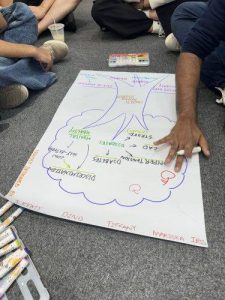
In the session on presentation skills and body language, we learned important techniques such as the “TEMPTation” model and the 4 Ps: Plan, Prepare, Practice, and Present. An engaging activity focused on crafting a 30-second elevator pitch highlighted the value of planning for clearer and more effective communication.
We also emphasized the use of 6W questions (Who, What, Where, When, Why, How) to guide presentation structure, and stressed the importance of audience analysis and customizing presentations to meet audience needs. Preparing the environment and checking equipment were also covered, concluding with a reminder of the necessity of personal commitment to delivering impactful presentations.
The session on session design emphasized the importance of careful assessment and planning, introducing the NAOMIE framework (Needs Assessment, Aims & Objectives, Method & Implementation, Evaluation) and the 4MAT model for designing engaging presentations. We enhanced our session design skills through various educational frameworks and techniques, with a major highlight being Bloom’s Taxonomy, which outlines six levels of learning: remembering, understanding, applying, analysing, evaluating, and creating. Trainers demonstrated these levels using climate change as a topic, and we practiced applying Bloom’s Taxonomy to different topics, experimenting with how to address each level in our presentations.
The workshop also covered the 4MAT learning style model, integrating different learning preferences into session design.
Finally, we determined the topics for our final presentations on day 4 through a random selection process.

The event concluded with a graduation ceremony, marking our successful completion of the TPHT workshop and leaving us better equipped to address public health challenges in our regions.
In conclusion, this four-day training camp on public health and healthcare delivery was an incredibly valuable and transformative experience. The opportunity to connect with like-minded peers from the Asia-Pacific region was inspiring and enriching. As I reflect on this invaluable experience, I am motivated to continue exploring new avenues of professional development and capacity building. I am confident that there is always room for growth, and I am excited to apply the knowledge and skills I have gained to make a positive impact in my community.
What I Learnt at the Training?
One of the most impactful aspects of the training was the opportunity to learn from IFMSA trainers in the field of public health. The workshops and discussions covered a wide range of topics, from disease prevention to health promotion. This knowledge will be invaluable as I continue my medical studies and prepare for a career in healthcare.
Additionally, the training helped me develop my communication skills. Effective communication is essential for medical professionals, as we need to interact with patients, families, and healthcare colleagues. The training taught me how to communicate clearly, empathetically, and professionally, which will undoubtedly benefit me in my future career.
Another valuable aspect of the SRT was the focus on adult learning. Understanding adult learning principles is crucial for medical students, as we will be constantly learning new information and teaching patients about their health conditions. The training covered topics such as adult learning theories, effective teaching methods, and andragogy (teaching adults). This knowledge will help me become a more effective learner and educator.

Last but not least, the training not only broadened my horizons but also empowered me to speak my mind without fear of judgment. It created a safe and supportive environment where I felt comfortable expressing my thoughts and opinions, knowing that they were valued and respected. This newfound confidence has helped me feel more connected to the group and has encouraged me to participate more fully in discussions.





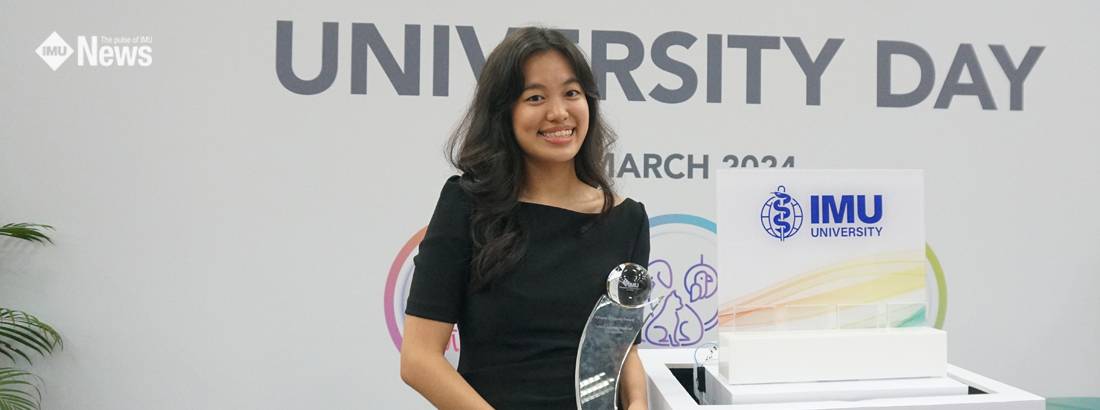

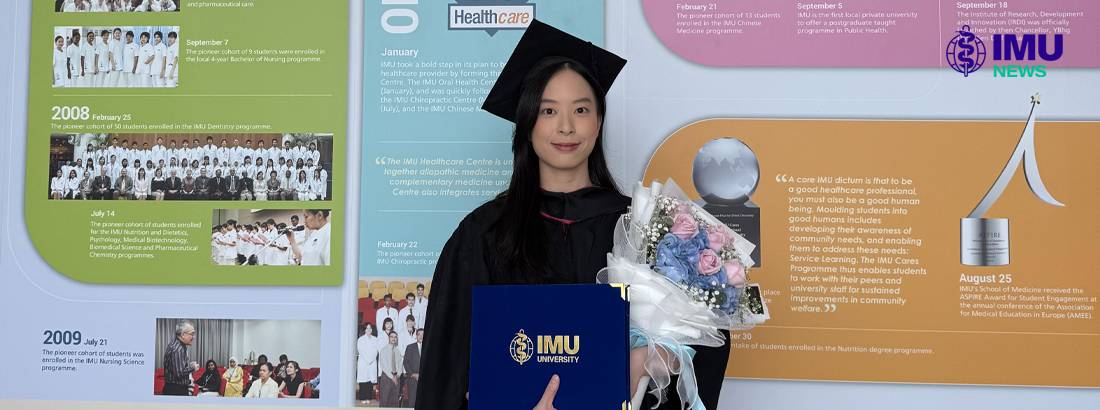
No approved comments.